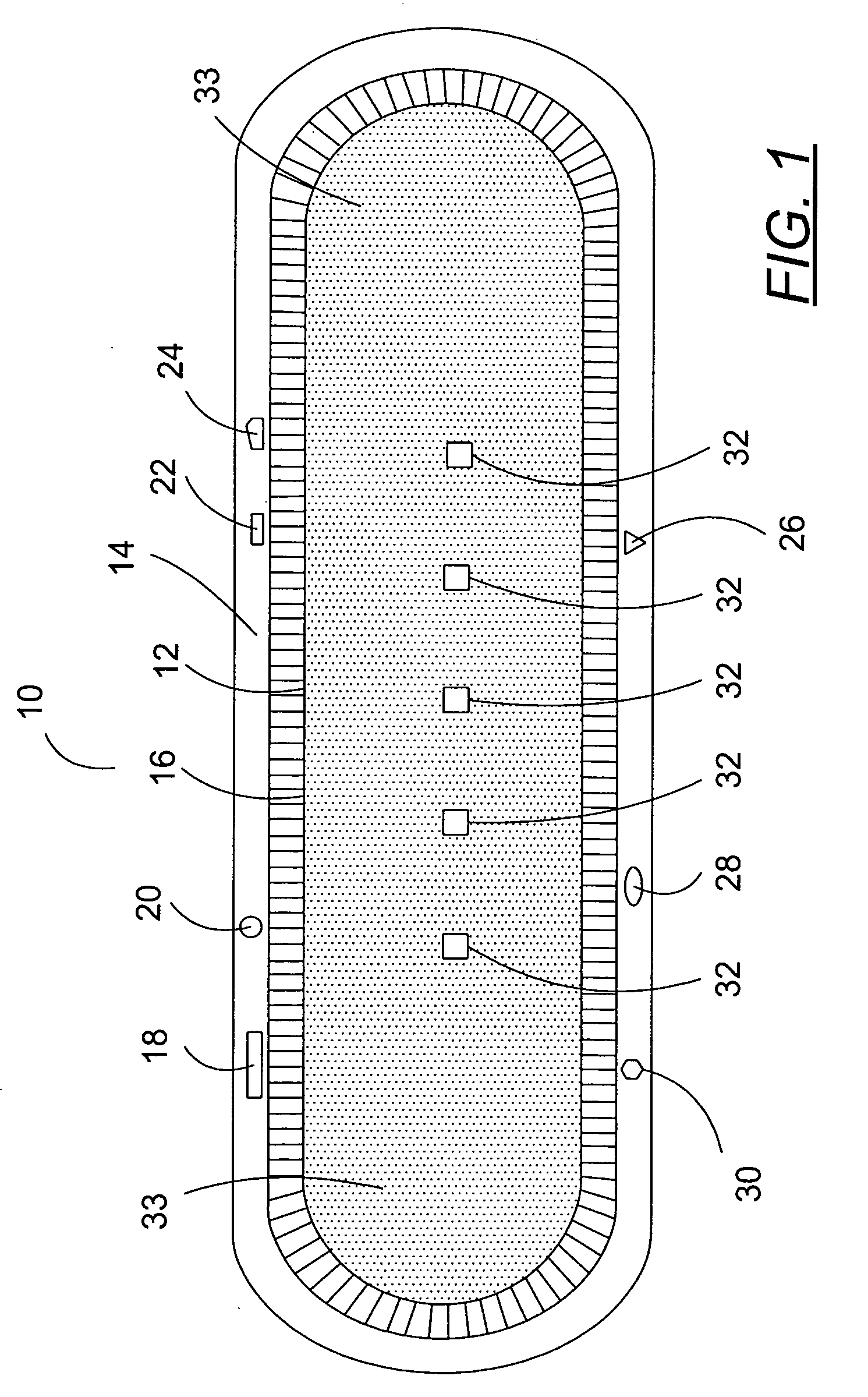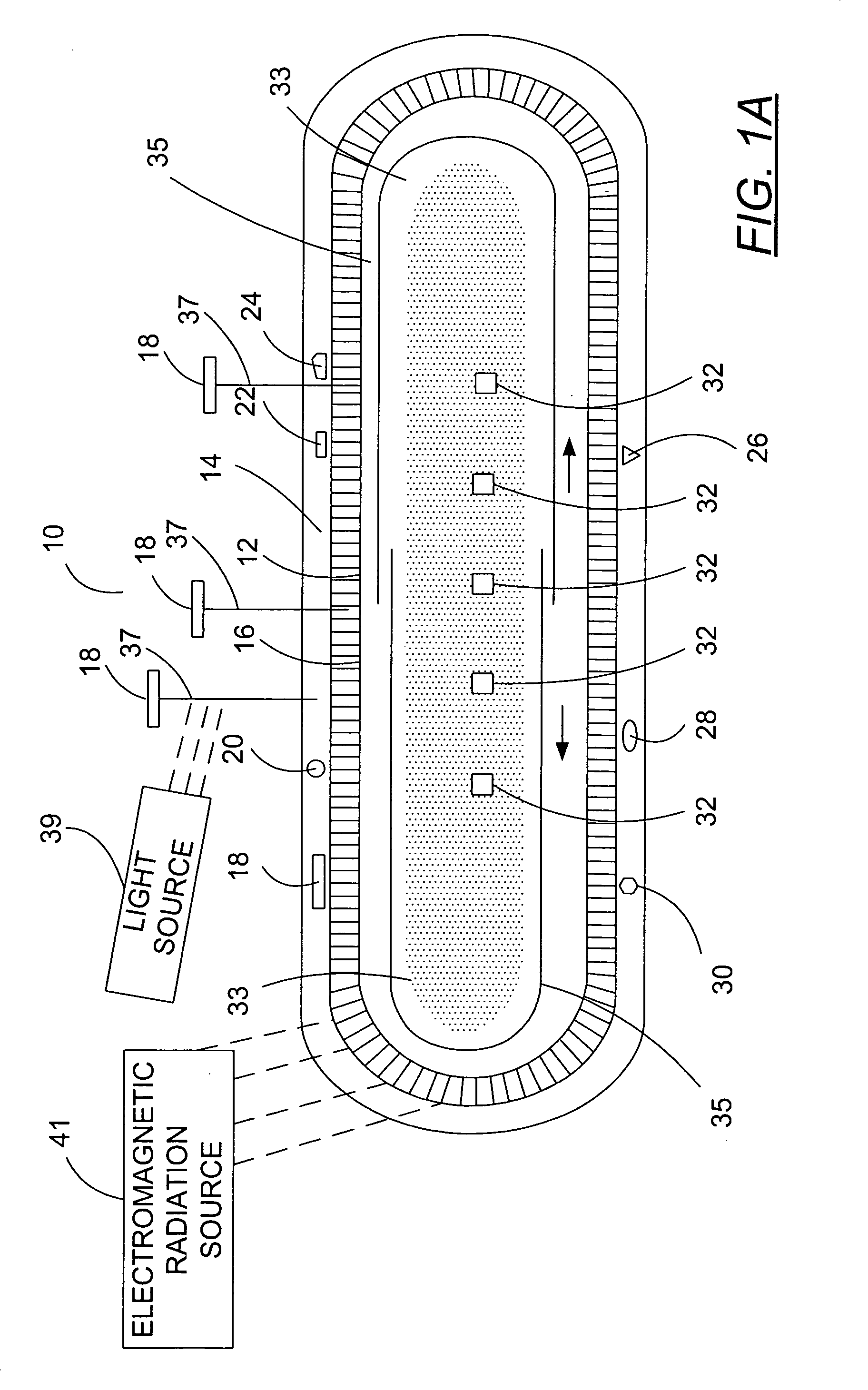Medical device
a medical device and implantable technology, applied in the field of implantable medical devices, can solve the problems of impeded escape of whatever signal is generated in the lumen, local signal void, and substantially distorting the surrounding of the stent design
- Summary
- Abstract
- Description
- Claims
- Application Information
AI Technical Summary
Benefits of technology
Problems solved by technology
Method used
Image
Examples
Embodiment Construction
[0088] In the first part of this specification, certain assemblies that contain nanomagnetic material, and / or certain processes for making nanomagnetic material, will be briefly described. Thereafter, in the second part of this specification, an improved stent assembly whose lumen is readily imageable under magnetic resonance imaging conditions will be described. Thereafter, in the third part of this specification, an improved contrast-enhancing agent assembly will be described.
[0089]FIG. 1 is a schematic diagram of a preferred seed assembly 10 of this invention that may, in one preferred embodiment, contains nanomagnetic material. The FIGS. 1 and IA of this specification are substantially identical to the FIGS. 1 and 1A of published United States patent application US 2005 / 0025797, published on Feb. 5, 2005, the entire disclosure of which is hereby incorporated by reference into this specification; in particular, and without limitation, the disclosure of pages 2 through 40 of such...
PUM
| Property | Measurement | Unit |
|---|---|---|
| frequency | aaaaa | aaaaa |
| volume | aaaaa | aaaaa |
| capacitance | aaaaa | aaaaa |
Abstract
Description
Claims
Application Information
 Login to View More
Login to View More - R&D
- Intellectual Property
- Life Sciences
- Materials
- Tech Scout
- Unparalleled Data Quality
- Higher Quality Content
- 60% Fewer Hallucinations
Browse by: Latest US Patents, China's latest patents, Technical Efficacy Thesaurus, Application Domain, Technology Topic, Popular Technical Reports.
© 2025 PatSnap. All rights reserved.Legal|Privacy policy|Modern Slavery Act Transparency Statement|Sitemap|About US| Contact US: help@patsnap.com



